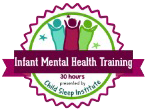Sunday, March 9, 2025, 2:00 AM Clocks Are Turned, Forward
March 10th marks Daylight Saving Time’s arrival, I find it confusing and exhausting, and I am a Sleep Coach! The time change can throw things off. (And that’s probably true for everyone in your house, not just your little one!)
Most of my tips for fall can also be applied to spring. Instead of making adjustments for the clock moving back, you focus on the shift to accommodate moving forward. Try these strategies to helps ease the transition:
- Take Small Steps Towards Making the Shift: Let’s say your toddler goes to sleep at 7 p.m. Once the clock moves forward, that bedtime would become 8 p.m. To preserve the 7 p.m. bedtime, start adjusting the nighttime schedule about a week in advance, moving it about 15 to 20 minutes earlier each day. The goal is to have bedtime moved an hour earlier by the time Daylight Saving kicks in. You can also work up to a bedtime that’s 30 minutes early, then do the final 30-minute shift once the time changes
- Keep Your Baby Well-Loved and Comfortable at Night: Stability during the shift is key. Keep doing the things your baby enjoys during the nighttime routine, such as a massage, reading, or snuggling. If you’d like to add something new to the mix that will help your little one feel relaxed and soothed, give it a try. Just remember, if you change the amount of time you spend on the bedtime routine, you need to move the start time, too.
- Adjust the Daily Schedule, Too: As you move the bedtime earlier, move naps and feeding times accordingly. This helps preserve the sleep/wake windows your baby is accustomed to. Consistent nap schedules will help your little one fall asleep more easily at night.
- Keep an Eye on the Internal Clock: There’s more than one kind of clock to reset for Daylight Saving Time. Your child’s internal clock needs to adjust to the time change, too. Use natural or indoor light in the mornings to reinforce the cue to wake up, and use blackout window coverings at night as the days lengthen so your little one knows it’s time to rest.
Alternatively, you can spring forward once Daylight Saving Time starts. I call this the “Ease In” transition. It starts with the normal wakeup time (which will probably be an hour later than normal according, to the clock with the time change). On day one, move bedtime earlier 15 minutes, and continue moving it earlier 15 to 20 minutes over the next several days until you reach one hour.
Nap Timing is Key for Easing in. Keep in mind:
- For Babies Taking Multiple Naps Per Day: Keep the awake window between waking up and the first nap the same. If it was 2 hours before the time change, keep it 2 hours now. And make the last nap of the day start 30 minutes earlier to align with the earlier bedtime.
- For Little Ones Taking One Nap Per Day: Again, move the nap start time about 30 minutes earlier than usual to keep a normal window of wake time until the new bedtime.
And parents, the time change may not be easy for your own sleep schedule, so be gentle with yourself. Stay calm and carry on through the first few days of the transition. (Especially on the Monday after the time change, which tends to be harder to manage.)
If your child is still struggling with the new schedule after a couple of weeks, contact me for a 30-Minute phone consultation or join me on Sleep Talking Tuesdays, where I offer parents great sleep support tips and resources. With a new schedule in place for Daylight Saving Time, you and your little one can enjoy playing together outdoors during the beautiful spring and summer days ahead.





Comments are closed.